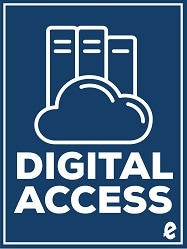
Self-Ligation in Orthodontics
by Theodore Eliades (Aristotle University of Thessaloniki ); Nikolaos Pandis (Newcastle Dental Hospital & School ); Foreword by: Lysle E. Johnston; Foreword by: Larry W. WhiteRent Textbook
New Textbook
We're Sorry
Sold Out
Used Textbook
We're Sorry
Sold Out
eTextbook
We're Sorry
Not Available
Summary
Table of Contents
| Contributors | |
| Foreword | |
| Foreword | |
| Preface | |
| Acknowledgments | |
| Dedication | |
| Introduction | |
| Development of Light Force Orthodontics: the Original Pin-a-slot Appliance as Ancestor to Modern Brackets | |
| Introduction | |
| Pin-a-slot appliances | |
| Historical Aspects and Evolution of Ligation and Appliances | |
| Introduction | |
| Early ligatures | |
| Elastomeric ligatures | |
| Begg pins | |
| Self-ligation | |
| The Materials Science and Biomechanics of Self-Ligation | |
| The Significance of Bracket Material Properties in Orthodontic Mechanics | |
| Introduction | |
| Bracket base | |
| Wings | |
| Base-wing joint | |
| Bracket slot | |
| Biomechanics of Self-Ligation: Analysis of Forces and Moments Exerted by Self-ligating Brackets | |
| Introduction | |
| Forces generated during initial alignment with self-ligating and conventional brackets | |
| Forces generated by conventional and self-ligating brackets during simulated intrusion-extrusion and bucco-lingual correction | |
| Moments generated during simulated rotational correction with self-ligating and conventional brackets | |
| Consistency in the ligation force with active self-ligating brackets throughout treatment | |
| Treatment Outcome-Clinical Performance | |
| Essentials of Clinical Research Design | |
| Introduction | |
| Study design | |
| Non-experimental/observational studies | |
| Experimental studies/intervention studies | |
| Conclusion | |
| Determinants of Tooth Movement: Molecular Response of Periodontal Ligament and Bone to Loading | |
| Introduction | |
| Periodontal ligament | |
| Orthodontic tooth movement | |
| Efficiency and Treatment Outcome with Self-Ligating Brackets | |
| Introduction | |
| Treatment duration | |
| Dental arch changes | |
| Torque delivery | |
| Space closure | |
| Handling efficiency | |
| Discomfort | |
| Root Resorption in Orthodontics | |
| Introduction | |
| History of OIIRR | |
| Incidence of OIIRR | |
| Location of OIIRR | |
| Severity of OIIRR | |
| Diagnosis of OIIRR | |
| Pathogenesis of OIIRR | |
| Light microscopy of OIIRR | |
| Scanning electron microscopy of OIIRR | |
| Biochemistry and molecular biology related to OIIRR | |
| Physical properties of orthodontically induced inflammatory root resorbed cementum | |
| Factors affecting OIIRR | |
| Repair of OIIRR | |
| Orthodontic relapse and OIIRR | |
| Clinical consequences of OIIRR | |
| Prevention and management of OIIRR | |
| Root Resorption with Self-Ligating Brackets | |
| Introduction | |
| Relevant literature | |
| Potential factors affecting OIIRR | |
| Attachment of Oral Microbiota to Dental Surfaces | |
| Introduction | |
| The oral bacterial challenge | |
| Salivary component interactions with oral bacteria | |
| Adaptive immunity in the oral cavity | |
| Salivary Levels of Cariogenic Bacteria in Patients Treated with Self-Ligating and Conventional Brackets | |
| Introduction | |
| Effect of orthodontic therapy on oral cariogenic bacteria | |
| Periodontal Impact of Orthodontic Treatment with Self-Ligating Brackets | |
| Introduction | |
| Short-term effects | |
| Long-term effects | |
| Different bracket systems | |
| Treatment Mechanics with Self-Ligating Brackets | |
| Introduction | |
| Diagnostic philosophies | |
| Aspects of clinical biomechanics | |
| Archwire sequencing with self-ligating brackets | |
| Tooth movement | |
| Retention | |
| Index | |
| Table of Contents provided by Publisher. All Rights Reserved. |
An electronic version of this book is available through VitalSource.
This book is viewable on PC, Mac, iPhone, iPad, iPod Touch, and most smartphones.
By purchasing, you will be able to view this book online, as well as download it, for the chosen number of days.
Digital License
You are licensing a digital product for a set duration. Durations are set forth in the product description, with "Lifetime" typically meaning five (5) years of online access and permanent download to a supported device. All licenses are non-transferable.
More details can be found here.
A downloadable version of this book is available through the eCampus Reader or compatible Adobe readers.
Applications are available on iOS, Android, PC, Mac, and Windows Mobile platforms.
Please view the compatibility matrix prior to purchase.
